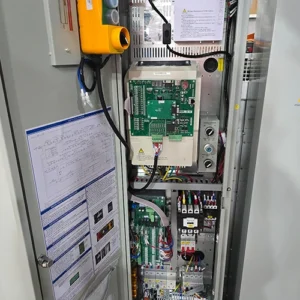جدول المحتويات
تبديلElevators Can Enhance Safety and Efficiency
Elevators are an essential part of modern architecture and urban life, allowing smooth vertical transportation in buildings. However, the technology behind these systems is continually evolving. The upgrading of various brands of elevators is crucial not only for ensuring safety but also for enhancing operational efficiency. In this article, we will explore the significance of upgrading elevators and how different brand upgrades can lead to a more reliable, safe, and efficient experience for users.
One of the primary reasons for upgrading elevators is safety. Older elevator models may not meet current safety standards, which can put users at risk. For instance, Otis, one of the leading elevator manufacturers, has introduced advanced safety features in their latest models. By upgrading an old Otis elevator to a state-of-the-art model, building managers can incorporate modern safety elements such as automatic rescue devices and sophisticated redundancy systems. These features ensure that if there is a malfunction, the elevator will safely descend to the nearest floor and open its doors, protecting passengers.
Another key advantage of the **upgrading of various brands of elevators** is efficiency. Modern elevators are designed to use less energy, reducing overall operational costs. For example, Kone has developed eco-efficient traction elevators that significantly decrease energy consumption compared to their older counterparts. When a building replaces its outdated Kone elevators, it not only lowers energy bills but also contributes to a greener environment. This aspect is becoming increasingly important in today’s world, where sustainability is a priority for many organizations and residents alike.
Furthermore, the upgrading of elevators can improve the user experience. Schindler, known for its innovation, offers elevators with smart technology that optimizes travel time by predicting passenger flow. By upgrading older Schindler elevator systems, buildings can ensure a faster and more pleasant ride. For instance, a busy commercial building that sees a high footfall during peak hours will greatly benefit from such advancements. This can lead to increased tenant satisfaction and potentially higher rental rates for property owners.
Consider the case of a hospital where time is of the essence. Upgrading an outdated elevator system to a modern Thyssenkrupp model that features improved response times can play a crucial role in emergency situations. The faster and more efficient movement of patients, staff, and medical supplies can make an indelible difference in critical care scenarios, ultimately saving lives. Thus, the **upgrading of various brands of elevators** is not just a technical necessity; it is a matter of life and death.
Moreover, the aesthetics and functionality of elevators can also be enhanced through upgrading. Many brands like Mitsubishi focus on designing elevators that offer an enhanced visual appeal. Upgrading an old elevator to a new Mitsubishi model can imbue a building with a fresh look, potentially attracting more tenants and visitors. The use of modern materials and finishes can also make these elevators easier to clean and maintain, further contributing to building upkeep.
In conclusion, the **upgrading of various brands of elevators** is a wise investment for property owners and managers. The benefits span from improved safety features, increased energy efficiency, and enhanced user experience to striking aesthetics that promote modernity. As technology continues to advance, it is essential for building owners to consider these upgrades seriously. With these upgrades, they not only enhance the functionality of their elevators but also contribute to the overall quality of life for all who use them. The modern world demands safety, efficiency, and elegance—attributes that are all achievable through the upgrading of elevator systems across various brands.


